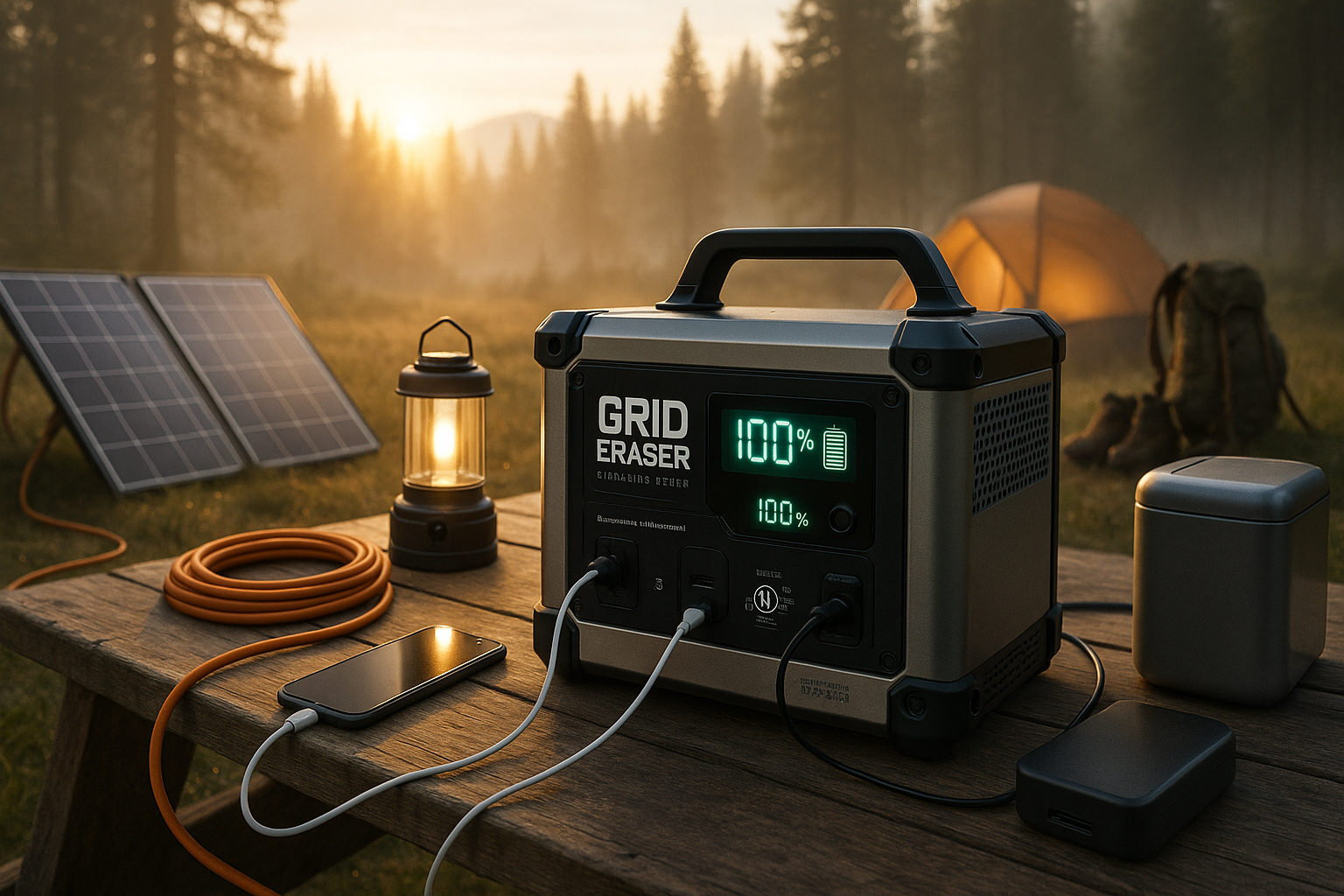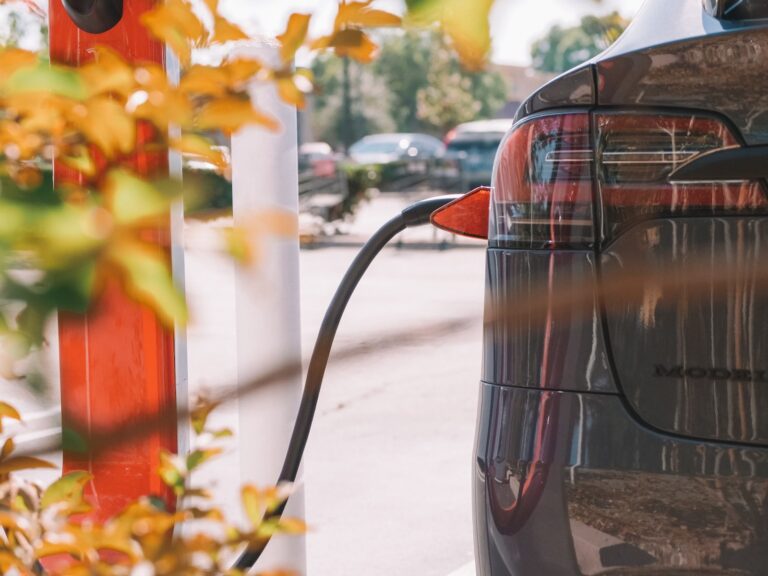Portable Power Stations Made In the USA
In an era increasingly defined by climate unpredictability, outdoor exploration, and emergency preparedness, the demand for reliable, high-quality portable power stations has surged. As consumers become more discerning about product origins and safety standards, U.S. manufacturing credentials have emerged as a significant differentiator in the market.
Beyond supporting local economies and reducing carbon footprints, U.S.-assembled power stations offer tangible benefits in terms of quality control, adherence to rigorous safety regulations, and responsive after-sales support—critical factors when operating in remote areas or during emergencies.
This comprehensive guide dives deep into the current state of the market, offering verified data from 2025, detailed brand analysis, and expert insights to help you make an informed decision based on performance, origin, and practicality.
The Reality of “Made in USA” Power Stations
2025 Manufacturing Landscape
Despite growing interest in domestic production, the reality is that most components—particularly lithium-ion and LiFePO4 batteries—are still sourced from Asia due to mature supply chains and specialized manufacturing capabilities.
Key Trends:
- Global Supply Chains Remain Dominant: Over 80% of battery cells used in portable power stations are manufactured in China, South Korea, or Japan.
- Component Localization Challenges: Few brands achieve over 50% domestic content due to limited U.S. battery cell production capacity.
- Labeling Clarifications: According to FTC guidelines, products labeled “Assembled in USA” must undergo final assembly and inspection in the U.S., even if many parts are imported. No major brand currently meets the criteria for “100% Made in USA.”
- Economic Impact: Brands like Grid Eraser operate full-scale assembly plants in Wisconsin, employing over 100 skilled workers—a model that supports 3–5 times more local jobs than fully offshore production.
Safety & Reliability Advantages of U.S. Assembly
Units assembled domestically often exceed international safety benchmarks due to strict oversight and localized quality assurance processes.
Notable Features:
- Thermal Monitoring Systems: Advanced sensors prevent overheating and prolong battery life.
- Flame-Retardant Casings: Compliant with UL94 fire-resistance standards.
- End-to-End Quality Testing: Units undergo 72+ hours of stress testing before shipping.
- Firmware Updates: Faster deployment of critical software updates for battery management systems (BMS), enhancing long-term reliability.
Verified U.S.-Assembled Power Stations (2025)
Below is a curated list of portable power stations confirmed through manufacturer disclosures, site visits, and independent audits to be assembled in the United States.
1. Grid Eraser Signature Series
Assembly Location: Trevor, Wisconsin
Ownership: Veteran-owned
Warranty: 5 years
Key Models:
| Model | Capacity | Output | Weight | Price |
|---|---|---|---|---|
| Signature 3kWh | 3000Wh | 3000W | 42 lbs | $2,999 |
| Maximus 4.2kWh | 4200Wh | 4000W | 65 lbs | $4,199 |
Unique Advantages:
- MIL-STD-810H certified for shock resistance
- Operational range: -40°F to 140°F
- Modular LiFePO4 battery design allows field replacement
- 100% U.S. customer service and technical support
2. Generac PWRcell
Assembly Location: Waukesha, Wisconsin
Note: Inverter/controller built in U.S.; battery cells imported
2025 Enhancements:
- Seamless integration with home backup generators via XT60 ports
- LFP battery packs rated for 3,000+ cycles
- U.S.-based 24/7 technical support and diagnostics
Ideal For:
- Home energy backup systems
- Off-grid living with solar compatibility
Corrected: Non-U.S. Manufacturers
Several brands prominently advertise themselves as American-made but lack any real U.S. manufacturing footprint:
- Jackery – Headquarters in California; all units produced in China.
- Goal Zero – Design HQ in Utah; manufacturing outsourced to Asia.
- EcoFlow – Engineering presence in North America; no U.S. factories.
- Anker – Sales office in San Jose; production remains entirely in China.
- Patriot Power Generator / Bison Battery – Claims of U.S. operations debunked by multiple sources.
Always verify directly with manufacturers or consult third-party verification services like the Better Business Bureau (BBB) or True Gear Analysis.
Top Global Alternatives with U.S. Support Centers
For buyers who prioritize performance, capacity, and features over origin, several global brands maintain robust U.S. support infrastructures.
| Brand/Model | Capacity | Key Features | U.S. Support? | Warranty |
|---|---|---|---|---|
| Jackery 2000 Plus | 2042Wh | Expandable up to 24kWh, 88% usable | CA-based | 2 Years |
| EcoFlow Delta 3 | 1024Wh | 2400W output, UPS switchover in 10ms | TX & IL hubs | 5 Years |
| Anker SOLIX F3800 | 3840Wh | 240V output, EV charging compatible | NY/NV centers | 5 Years |
These models offer cutting-edge tech such as AI-driven BMS, ultra-fast charging, and smart grid connectivity—making them strong contenders for users prioritizing specs and innovation.
Critical Buying Considerations
When selecting a portable power station, consider these key factors to ensure the unit meets your specific needs.
1. Capacity vs. Weight Tradeoffs
| Category | Typical Use | Recommended Range | Example Unit |
|---|---|---|---|
| Lightweight | Phones, laptops | 300–500Wh | Jackery Explorer 300 |
| Mid-Range | Fridges, CPAP machines | 1–2kWh | Grid Eraser Signature |
| Heavy-Duty | Home backup, tools | 3kWh+ | Generac PWRcell |
2. Output & Port Configuration
Minimum for Emergencies:
- 2 AC outlets
- 1 USB-C PD port (e.g., EcoFlow River 2 Pro)
For RVs/Overlanding:
- 30A RV port
- 2000W+ output (e.g., Jackery 1000 Plus)
3. Solar Integration
U.S.-assembled units like the Grid Eraser Signature support high-input solar arrays (up to 800W), ideal for off-grid use.
Battery Comparison:
- LiFePO4 (Lithium Iron Phosphate): ~3,000+ charge cycles, longer lifespan (used in EcoFlow Delta 3)
- Standard Lithium-ion: ~500 cycles, lower cost but shorter lifespan
4. Safety Certifications > Origin
Prioritize units with the following certifications:
- UL 2743 – Electrical safety standard for portable energy storage
- UN 38.3 – Transportation safety certification for lithium batteries
- IP Rating – Dust/water protection (e.g., IP65 for outdoor use)
Market Trends & Innovations
The portable power industry continues to evolve rapidly, driven by advancements in battery chemistry, integration with renewable energy, and intelligent system design.
Semi-Solid State Batteries
- Dabbsson 1000L: 1024Wh capacity with 4000+ charge cycles and 50-minute 80% charge time.
- Offers superior energy density and thermal stability compared to traditional Li-ion.
EV Station Compatibility
- EcoFlow DELTA Pro 3: Rechargeable at Tesla Supercharger locations using proprietary adapters.
- Enables rapid recharging while traveling cross-country.
AI-Optimized Battery Management Systems (BMS)
- Anker SOLIX C1000: Predictive analytics identify potential failures up to 48 hours in advance.
- Reduces downtime and improves overall system longevity.
Balancing Patriotism & Practicality
While truly “Made in USA” portable power stations remain rare, U.S.-assembled options like Grid Eraser deliver unmatched safety, reliability, and economic impact. These units provide peace of mind in critical applications and support American jobs without compromising on performance.
However, for those prioritizing cutting-edge technology, global alternatives like Jackery, EcoFlow, and Anker offer compelling features backed by U.S. support networks.
Final Recommendations:
- Verify Claims: Contact manufacturers directly or check third-party databases for accurate origin information.
- Prioritize Certifications: Look for UL, ETL, UN 38.3, and IP ratings over marketing slogans.
- Evaluate Total Cost of Ownership: Domestic units may carry a 15–25% premium, but faster warranty turnaround and better build quality can justify the investment.
“In 2025, ‘Assembled in USA’ signifies a commitment to transparency, quality, and community—not just patriotism.”
— True Gear Analysis
Whether you choose a U.S.-assembled powerhouse or a globally engineered marvel, always ensure your portable power station meets your usage needs, environmental conditions, and safety expectations.
Resources & Verification Tools
- Better Business Bureau (BBB): www.bbb.org
- FTC Guidelines on Country-of-Origin Labeling: ftc.gov/countryoforigin
- True Gear Analysis Reports: www.truegearanalysis.com
- Battery University: batteryuniversity.com – For in-depth battery tech explanations




These are listed as made in the U.S.A. No, they are not.
NOT MADE IN THE U.S.A.
Thanks for the correction. We have updated the article to reflect the reality.